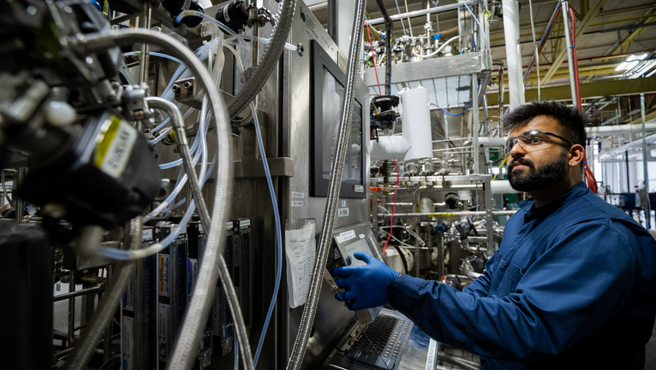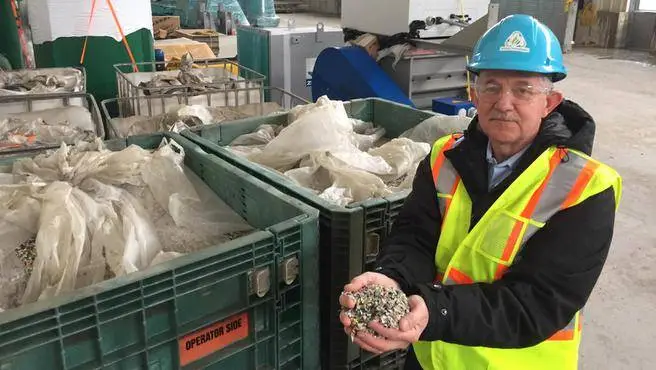Career Opportunities on the Horizon in Nova Scotia’s Bioeconomy
A 2020 report, “The Bio Revolution: Innovations transforming economies, societies, and our lives,” published by the McKinsey Global Institute, estimated that in the next 20 years, the global economic impact of the so-called Bio Revolution could amount to $4 trillion a year.
As the consequences of climate change become more apparent every year, a transition to a bio-based
economy has never been more critical.

The booming global economy of renewable agricultural, marine and forestry products is one that Nova Scotia is well-positioned to lead. And Nova Scotians agree; a recent survey found that over 90% of respondents who were aware of the bioeconomy also supported its development, citing the sector’s positive economic and environmental impacts as essential.
But despite an abundance of renewable, bio-based resources, we face a significant roadblock; a lack of skilled workers to make it happen. With upwards of 1,000 additional skilled workers needed in the bioeconomy over the next five years, how can Nova Scotia develop the workforce required to meet the demand?
You may be wondering—what is the bioeconomy?
Simply put, it’s the idea that the items we use daily can be made from sustainable, renewable and recyclable products. These can be everything from bio-based paint formulations for our homes, biodegradable plastics, biofuels for transportation, wood fibre reinforcement in concrete – the list goes on.

Addressing Climate Change
One of the global community’s most significant challenges is addressing the looming threat of climate change. As carbon emissions increase and the planet continues to warm, the consequences of our reliance on fossil fuels grow more severe. The Intergovernmental Panel on Climate Change (IPCC) report released by the United Nations in February of 2022 detailed the disastrous effects on human life, biodiversity, and critical infrastructure if urgent climate action isn’t taken immediately. A transition to renewable materials is not an option; it’s necessary.
Embracing the bioeconomy must be a substantial part of the solution to the adverse effects of climate change. For example, in 2018, a study by the Canadian Gas Association found that substituting only 5 percent of Canada’s natural gas supply with renewable energy sources could reduce GHG emissions by 10 to 14 megatonnes per year – the equivalent of GHGs produced by 54 million cars.
Closer to home in Nova Scotia, a recent study from the Nova Scotia Innovation Hub found that the province’s forest sector is projected to sequester or avoid upwards of 200 million metric tons of carbon over the next 100 years. This amount can be further improved by increasing forest management, using bark, wood chips, and other by-products to produce energy, and maximizing the sector’s volume of lumber and solid wood product output.
Career Opportunities in Nova Scotia’s Bioeconomy
Career opportunities in the province’s bioeconomy are multiplying quickly. A 2022 survey of Nova Scotia businesses in the sector found that respondent companies are preparing to fill almost 1000 new positions in the next five years. These positions vary from roles in manufacturing and production, research and development, management and quality assurance. Companies such as Alter Biota and Sustane Technologies are promising examples of bioeconomy employers looking to hire skilled workers.


Career Opportunities in Nova Scotia’s Bioeconomy
Career opportunities in the province’s bioeconomy are multiplying quickly. A 2022 survey of Nova Scotia businesses in the sector found that respondent companies are preparing to fill almost 1000 new positions in the next five years. These positions vary from roles in manufacturing and production, research and development, management and quality assurance. Companies such as Alter Biota and Sustane Technologies are promising examples of bioeconomy employers looking to hire skilled workers.
However, bioeconomy employers face substantial challenges in filling vacancies, primarily due to a lack of applicants with the qualifications necessary to meet job requirements. In addition, between 2001 and 2021, the number of Nova Scotia workers aged 55 and over more than doubled, with more than 1 in 4 workers now nearing retirement age. But there is good news. According to Nova Scotia’s 2021 Labour Force Survey, the province’s labour force is growing, and the number of younger workers is also increasing. Tapping into this growth and attracting young people to the bioeconomy is critical for bridging the talent gap.

Another factor in the gap between job vacancies and qualified applicants is diversity. A 2021 study from BioTalent Canada found that workers from under-represented groups make up lower percentages of the Atlantic Canadian bioeconomy than elsewhere in Canada. These findings suggest that under-represented groups, such as female workers, those with disabilities, visible minorities and indigenous communities, could be significant sources of new talent for the bioeconomy.
The challenges faced today as we grapple with the effects of climate change and the changing labour market are significant. As a region that has relied on fossil fuels to drive its economy, a complete transition to renewables is no small task. But taking advantage of the abundance of our renewable resources to take a leading role in the global bioeconomy is an opportunity Nova Scotia cannot afford to miss. There are many opportunities for women, new Canadians, and others who haven’t previously considered careers in the bioeconomy.
Those looking to start their careers or retrain in Nova Scotia’s bioeconomy can expect a warm welcome.



Recent Comments